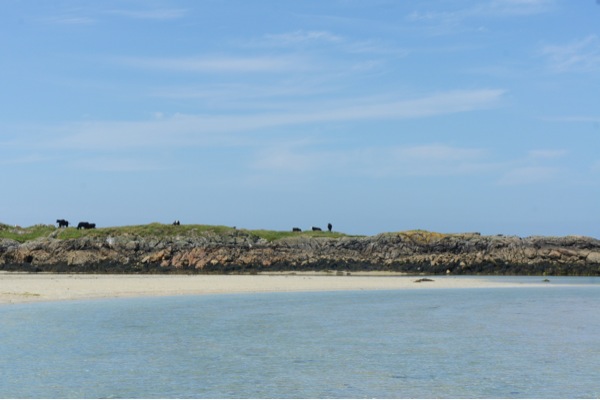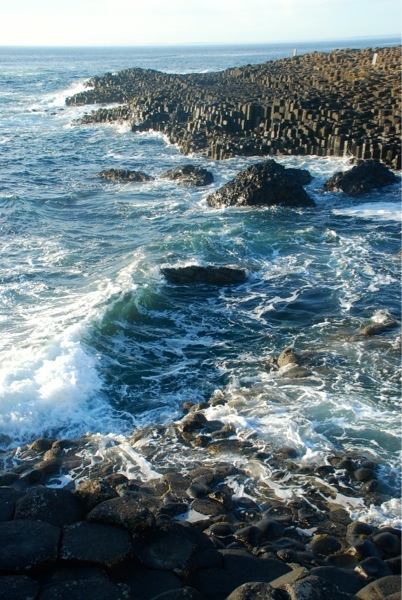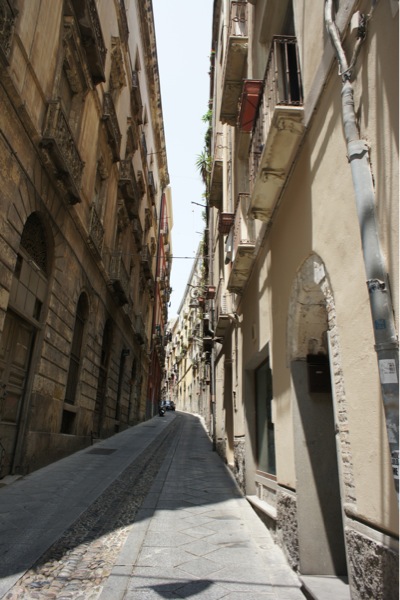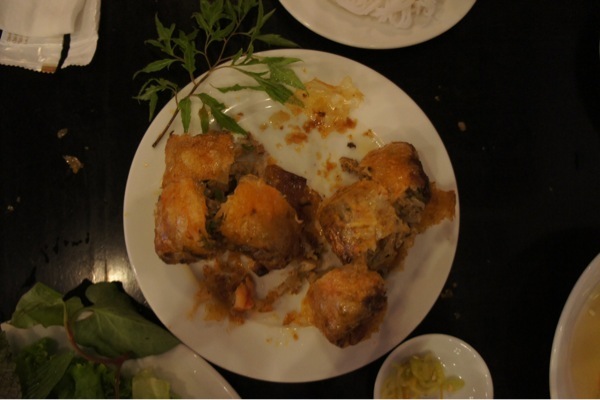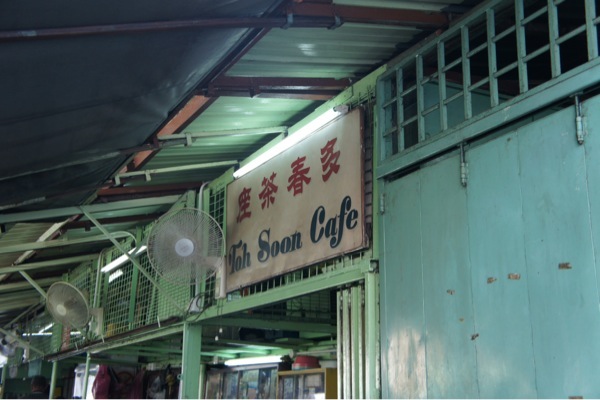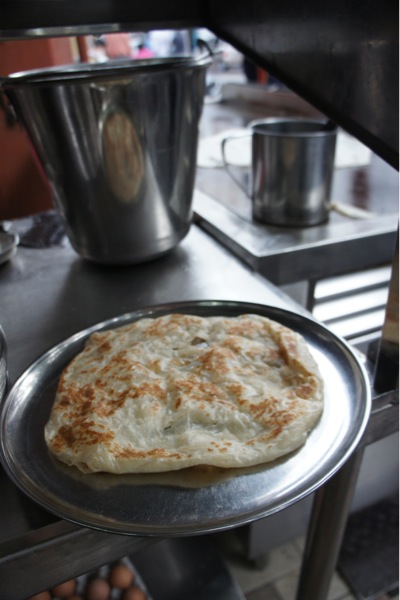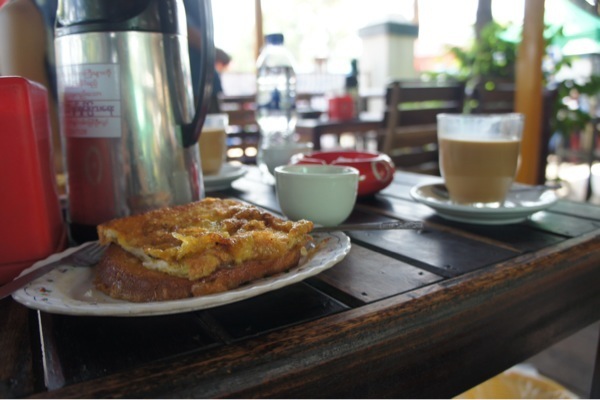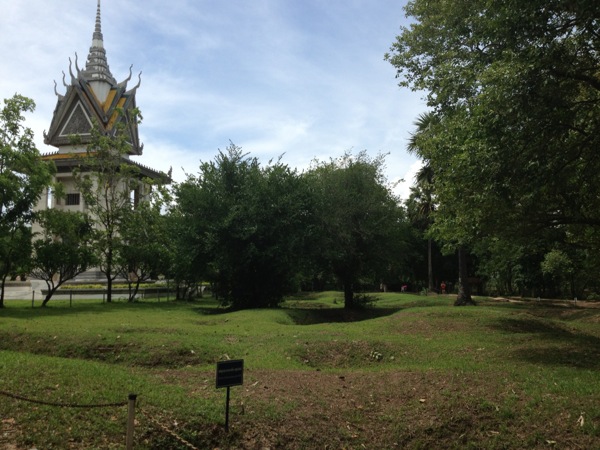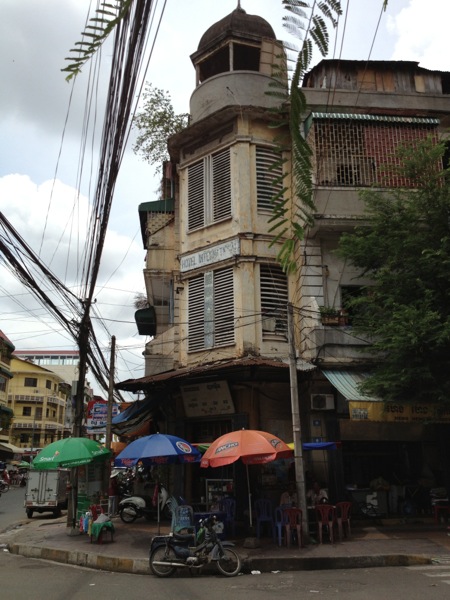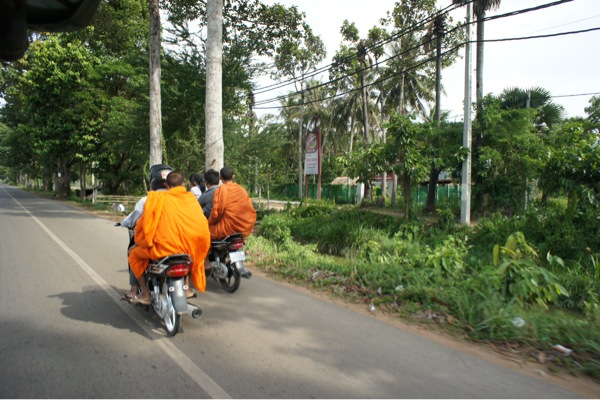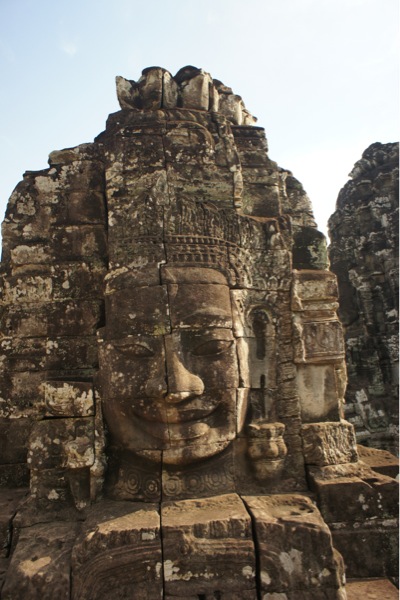Our first, and only, full day in Mawlyamine opened rainy and damp. It is the rainy season here in the south of the country which has the distinct result that it rains every day, and the helpful advantage that in a country without many tourists to start with there are even less here and now. (Fact: Q1 2013 tourist numbers were about a quarter million people, 60% from Asia and way up from last year - according to the Myanmar Times, a local English language newspaper). We decided on advice from friends who had made it down here a few months before to rented bikes (thank you Gioia and Ernesto). Apparently our best option was to rent them from the Breeze Guesthouse, a long established guesthouse on the Strand facing the bay. Our bikes in hand, and after a little detour to circle the town, we headed for the third peer to our ferry for Ogre Island.
As I told you before you need your passport number for everything here. So when we got to the boat, and Camilla found the right person to buy a ticket from, we realized that, oops, no one had their passport numbers. Luckily making them up on the spot doesn't seem to be a problem (For the record, I had mine memorized. I'm proud of this fact, though I realize it makes me imminently more traceable than either Camilla or Sue). The ferry wins second prize for most interesting transport so far this trip. It was, for lack of a better description, the kind of ferry you see in still pictures, half sunk, while watching the BBC. I could not venture to guess its age, but it was older than us for sure. The first level was packed to the edges with 'cargo' and mini restaurants of women selling tasty food at a low table surrounded by little brightly colored stools for their clients. There must have been at least three or four of these set ups. We squeezed past all the stuff and the people and the restaurants to place our large old fashioned bikes against the railing (if said sinking where to happen, I figured we could get out faster this way). Upstairs was surprisingly just like any other ferry. Rows of wooden benches and comparatively calm compared to the lively cafeteria downstairs. I think western ferries have something to learn from the food set up available to us. Lots of competition and a wide variety of dishes, all of them better then the bland and greasy food you usually find on ferries (I've been in a lot of ferries apparently).
Arrival at the island was definitely hectic. Even before the boat had maneuvered into its final position against the 'jetty', people were climbing on and throwing bags out the boat to waiting hands. We had unfortunately placed ourselves in everyone's way, which was definitely a source of mild panic as we really didn't want to be those ferengi blocking the locals' way. Luckily we managed to get out without too much fuss and one of our band was helped by a local who rescued the bike from the boat.
There isn't much to do on Ogre island other than bike around, find a pagoda to visit, and wave a lot to everyone. It was incredibly magical. Our first stop was to climb a hill to visit a stuppa which was a very sweaty way to discover the island. On our way down a group of local kids had noticed us or our bikes, and come to discover. They shyly waited for us at the bottom and welcomed us back with hellos and more hellos and more hellos. I think the only English they new, but each hello came with a big smile and a wave. They were just interested in us in the most innocent way. That friendliness thing I've talked about, and the guide books talk about, it's really true.
With a little help from our kids we went right and into a village. Camilla was given a banana completely unbidden, and we were waved at by almost everyone and not just little kids, People of every age and gender just smile and wave. We did get a couple of those "oh wow, look" reactions that I don't think happen I very many other places. Says a lot about how little tourism has impacted this country. Off we went down the road until we realized we needed to head back go make this ferry.
A few minutes after we turned back we heard a very large popping sound. The inner linings on one of the tires on Sue's bike had popped and here we were a good 40 minutes away from the ferry. We figured we could probably limp back since we didn't have much choice. As we got to the nearest village we stopped to take a look at the wheel in more detail. As we bent down to inspect Sue's tire a couple local kids rushed out to say hi. Seeing our problem they immediately, and I mean in a matter of seconds, whipped out a tire pump and tried filling it up with air. Because these kids all ride bicycles, they knew right away that the problem was more than a little bit of air. About a thirty seconds after we arrived, a girl of about 10 jumped on the bike and peddled away in very determined manner. Her father or well, an older guy, who spoke a little big of English told us it was all okay, sit down have a drink. Well okay, we thought, we didn't have much choice and she clearly knew what to do better than all three of us combined.
We sat and had a few drinks, giggled with the other kid of the family, managed to communicate to the grandmother that, yes, we were American (very generally well received here). About 15 minutes later, our young savior reappeared with our bike and a perfectly functioning tire all for 200 kyat and a nice cool break in the shade. Find me a 10 year old anywhere else who will step up to save a bunch of hapless tourists all of her own volition. I certainly wasn't that charming at that age.
We made it back to the ferry which this time turned out to be a much smaller flat bottomed river boat for 10 people. Our bikes made if on and fortunately we had brought umbrellas for the rain. Turns out they were more useful for the afternoon sun. On the boat we met a local guide, who has been profiled in the Lonely Planet. Charming older man who works as a manager at the Breeze guesthouse and from whom we learned we could rent a boat to go to Hpa'an the next day (Hpa'an is pronounced Pa'an).
But our day is not over. After lunch over looking the Salween river and bite to eat at the Grandmother Grandfather restaurant (located in a late Mad Men era building full of cats overhanging the water) we returned our bikes and decided to go for a walk. Mawlyamine is overlooked by a small hill upon which has been built a succession of pagodas and a viewpoint. The sign for the viewpoint seems to indicate it was constructed sometime in the 60s (as most of the newer constructions in the town seem to as well, though you can see some new money and more recent buildings). We made our way through the old colonial heart of the town, past a lot of Christian churches - some in working condition, some not, got into a bit of trouble with the military to take a picture of an old clock tower, and marveled at how relatively prosperous the town must have been during the colonial era (big buildings). As we made our way up the hill, we were told to go a different way by two locals, not wanting to be rude we let them guide us to a long staircase which led to... the viewpoint. With no phones or google maps its easy to get lost (really, how did we manage before?) but here people will step in and help as soon as they see you going the wrong way.
We climbed up (sweaty again) to a beautiful view of the river meeting the bay, tops of colonial buildings, flamboyant trees, sandbanks and islands and the sun setting through rain clouds. As we were walking away towards the main Paya (Pagoda/Wat) an older monk saw us approaching and crossed the street towards us. You have to understand that all the literature says to treat the monks with a lot of respect - don't touch their robes, don't really engage with them (cause you'll just screw it up and be disrespectful), just smile and bow and as a general rule better not to engage too much. With this older monk fast approaching us, I think we all froze to one degree or another panicked about doing the wrong thing. With a big smile he indicated he wanted a picture taken with all us, grabbed our hands and lined two of us next to him. Big smile and repeat with the third person. He then pointed to Camilla's head and made the universal sign for putting on glasses. Taking her sunglasses he put them on and demanded another picture. At this point we are all giggling and enjoying the rather irresponsible encounter with the monk. Pictures done, he leans over, asks me where I'm from, cheekily gives me a very light kiss in the cheek, and off he goes continuing
up the street.
Big smiles on our faces, we couldn't believe our day. A broken bike, quickly fixed, and a surprising encounter with a monk, have made our second day in Myanmar a rather unforgettable experience.
The next day we made our way to Hpa'an by boat.



